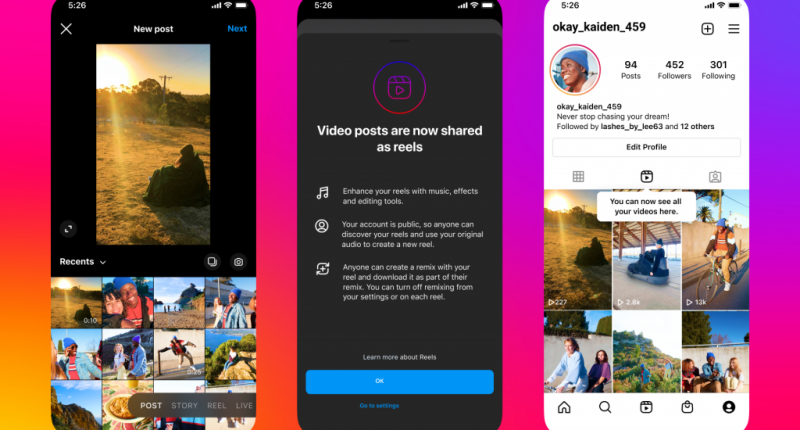The year is 2014. You’re still sometimes in awe of the impressive capacitive touch screen on your new phone, just a few years removed from the tedious old touch digitisers. You open the app tray, and you see that ever-enticing, convincingly inviting beige camera logo with a rainbow. You open your Instagram feed, one of your introverted friends has posted a picture of their Starbucks coffee and a novel, with a caption longer than any conversation they have ever had. Life is good.
But that’s not what Instagram feeds look like in 2022. Almost every post that shows up on the feed is a reel, even if it’s just a still image (a rampant technique among meme page circles). These videos are often meant to be viewed full screen and hence get a weirdly cropped presentation. Instagram is slowly starting to move away from its old and beloved photo sharing purpose, to be dominated by more video content.
The shift towards prioritising of video content in app development and incentivising it for creators has been a direct consequence of the Chinese giant TikTok’s success. Instagram has been taking steps to make Instagram an equally stimulating experience. The reason for TikTok’s success has been it’s model of short form video content, auto swiped to keep the user stimulated at unprecedented levels while remaining hands free. Instagram has successfully brought about a similar concept in the form of reels.
As it turns out, Instagram users like the app for what it is, and apparently don’t want it to be a second TikTok. Tati Breuning, a fashion photographer with over 300,000 followers on instagram, started a petition to “Make Instagram Instagram Again”. In an instagram post on her profile, the petition is further explained as “stop trying to be TikTok I just want to see cute photos of my friends.” The petition saw support from social media sensations Kim Kardashian and Kylie Jenner. When the Kardashian-Jenner family has a problem with Instagram, you best believe there is something wrong.
The appeal didn’t fall of deaf ears, kind of, as Instagram head Adam Mosseri, ironically addressed the community’s concerns via a reel video.
Mosseri clarified that Instagram’s new full screen feed has not been rolled out to the entire community of the app, but is being tested with a small percentage of it. He also admitted that the feature is not quite where the company would like. “I want to be clear, it’s not yet good. And we’re going to have to get it to a good place if we’re going to ship it to the rest of the Instagram community,” Mosseri said.
Addressing Instagram’s shift towards a video-sharing platform, Mosseri said, “I want to be clear: We’re going to continue to support photos. It’s part of our heritage. That said, I need to be honest: I do believe that more and more of Instagram is going to become video over time. We see this even if we change nothing. We see this even if you just look at chronological feed,”
“If you look at what people share on Instagram, that’s shifting more to videos over time. If you look at what people like and consume and view on Instagram, that’s also shifting more and more to video over time, even when we stop charging anything,” Mosseri added.
It is interesting to note here that content creators on Instagram have always aimed to post content that the app’s algorithm best supports and promotes. The content shift towards video can be attributed to the algorithm actively incentivising video and reel content instead of photos.
Mosseri also took the opportunity to adress the community’s displeasure due to their feed being full of “recommendations” instead of posts from accounts that they follow. “If you’re seeing things in your feed that are recommendations that you’re not interested in, that means that we’re doing a bad job ranking, and we need to improve. You can X out a recommendation, you can even snooze all recommendations for up to a month, or go to your following feed,” Mosseri said.
The creator community of Instagram did not appreciate the message, while simultaneously appreciating Mosseri’s communication to them. Mosseri’s address did not sound like a recognition of community outrage, or a reassurance of improvement, but just a politely worded version of “It is what it is.”
The Tech Portal is published by Blue Box Media Private Limited. Our investors have no influence over our reporting. Read our full Ownership and Funding Disclosure →






